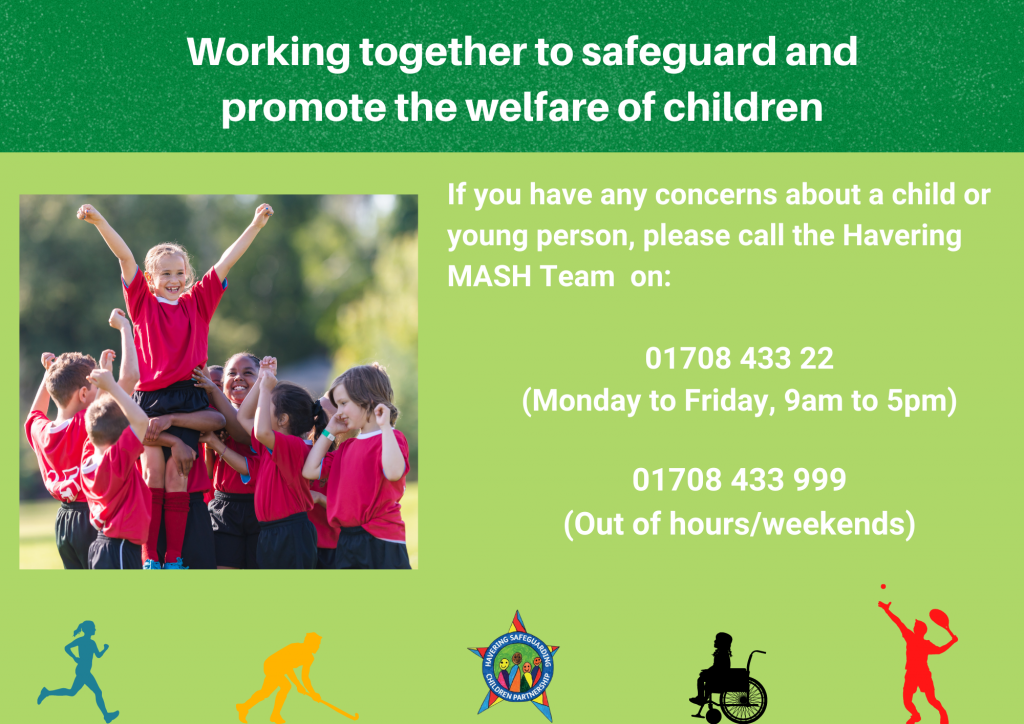Safeguarding & Sports
A video by NSPCC about sports and safeguarding.
It is important to encourage the safety and well-being of children and young people participating in sports and physical activity clubs. Spreading the message about child safety and cultivating a culture of always acting in the best interests of all children and young people is an important aspect of child safeguarding.
When staff, volunteers, or others provide services, activities, or programmes, safeguarding best practices should be exhibited and implemented. Information and training should be made available to coaches, staff, and volunteers to guide them in best practise when working with all children and young people to reduce the possibility of abuse to those at risk (or potential risk) in sporting environments.
People who work with children and young people in England are required by law to keep them safe. The Children Act of 2004 outlines this legislation. Working Together to Safeguard Children, a government paper, provides more recommendations.
It is critical that a sports or physical activity organisation that caters to children and young people has:
- the appropriate safeguarding policies and procedures in place;
- that employees (paid or unpaid) understand their roles in terms of child safety and welfare, as well as what to do if they have concerns about a child or young person in their care.
- that the organsiation demonstrates that they take child and adolescent safeguarding seriously.
A safeguarding policy makes clear to everyone what is required in relation to the protection of children and young people. This policy should be reviewed regularly.
Safeguarding policies can vary a little depending on the sport or activity but all policies must state:
- what the policy’s aim is, i.e. to safeguard children and young people
- good practice guidelines
- guidance about the use of film, photography and social media
- information on the recruitment and training of staff and volunteers
- procedures in place to respond to allegations
A code of conduct should define what constitutes acceptable behaviour and support the promotion of best practises. Individuals should be asked to sign a contract agreeing to follow the relevant code, and it should be made plain that failing to do so would result in the club/organization taking action. These standards of behaviour set a clear benchmark for everybody
There should be codes for:
- parents
- volunteers/staff
- coaches
- children
Any code of conduct must also make clear that discrimination or prejudice of any form is unacceptable and this can apply to: race, culture, age, gender, sexuality, religion or disability.
It be may be helpful to have guidelines depending on the sports regarding the care of disabled children or young people in terms of appropriate and inappropriate touch.
Prevention systems and procedures consist of measures to help minimise the possibility of children and young people being abused by those in a position of trust.
Policies and procedures need to be in place for recruiting staff and volunteers who are going to have contact with children and young people.
Advice on how to create efficient and effective recruiting selection procedures can be found here.
Disclosure and Barring Services.
Provides information on how to obtain a criminal record check, the DBS update service, and all the most recent updates on service changes, including applicant-only disclosures
Please refer to:
Safeguarding polices should be revised ideally at least every three years to accommodate the clubs changing needs and experience but also for changes in legislation.
Safeguarding children in sport is a fundamental part of running a sports club. Putting the right policies, protections and procedures in place can help make sure children and young people in sport are safe.
All clubs should have a designated person who has clearly defined responsibilities in relation to child safeguarding.
They must provide step-by-step guidance on what action to take if there are concerns about a child or young person’s safety or welfare.
These must include:
- who the procedures apply to
- definitions of abuse
- how to respond to a child who says either they or another child is/are being abused
- how to respond to allegations against a member of staff/volunteer or another young person
- how to respond to concerns about a child’s welfare where no specific disclosure/allegation is made
- what the appropriate use of video and photography at events is
- contact details for local social services and police, including out of hours contacts.
The Children Protection in Sport Unit
Information about how to put the right safeguarding in place.
Self-Assessment Tool with questions to take a club or organisation through the standards for safeguarding children and young people in sport, and to help assess what their club or organisation needs to do.
Safe sport events, activities and competitions helps a club or oganisation ensure that they meet their event’s safeguarding requirements and how they can take efforts to guarantee that all participants, including volunteers and officials, are safe.
UK Coaching
Code of Practice for Sports Coaches
UK Government
Keeping children safe in sports clubs and other extra curriculum activities
StopCE
Information, resources and videos specifically for the sports sector to help raise awareness of how abuse can occur through sport.
Their campaign is aimed at parents, coaches and children in order to help them understand what to look out for and how to respond to concerns. To view please click here.
Reporting concerns

If you would like to raise a concern about a professional working with children or young people, please contact the Local Authority Designated Officer on 01708 431653 or email lado@havering.gov.uk. For more information about LADO please see our 7 Minute Briefing by clicking here
